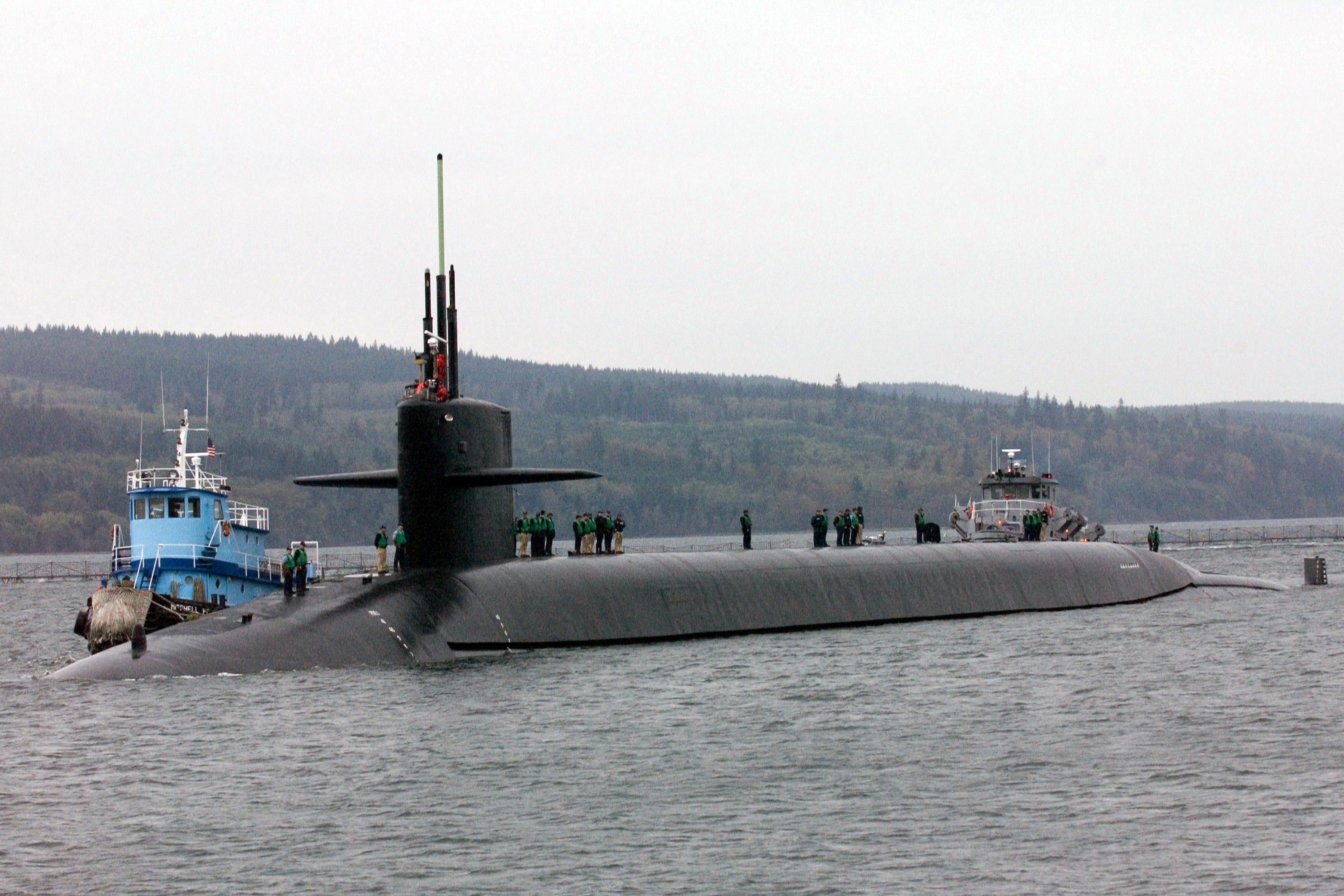Existing laboratory test methods don’t allow submarine engineers to test how a motor will vibrate in real-world conditions on a ship at sea, so designers take the conservative approach to prepare for the worst.
But a team of UConn engineers has developed a method to test vibrating, manufactured components, using actuators and shake tables, sensors, and mathematical formulas that can replicate the system-level, real-time conditions.
As the U.S. Navy looks to redesign existing platforms and complete designs of new submarines, this will allow ship builders to test the system-level response of physical hardware components earlier in the design process, says Richard Christenson, professor of civil and environmental engineering at UConn.
Christenson and his students have taken an existing test method used in the field of earthquake engineering, called real-time hybrid substructuring (RTHS), and advanced the existing framework so they can apply it to the mechanical applications of vibration control and structural-born acoustics.
The technical challenge they face involves combining the physical specimen – the motor, or any other component of interest – with the numerical simulation of the rest of the ship and the surrounding water.
This is done in the UConn Structures Research Laboratory, where Christenson and his colleagues place the physical specimen on a shake table that can rotate and move it in any possible direction. Every millisecond during a test, the reaction forces at the base of the specimen where it is attached to the table are measured and sent to a real-time target computer. The computer runs a mathematical model of the remainder of the structural system, including any surrounding fluid, and commands the table to move as the base of the specimen would move if it were sitting in water.
The forces are then measured again and this loop is repeated tens of thousands of times over. This research and the specialized equipment it uses were funded by the Office of Naval Research.
Christenson is using computers to mathematically run the critical components through their paces, to see how they will respond when they are part of a larger system. Often these parts are tested separately; however, they may perform differently when placed into a full structural system.
“We’re able to take a physical component and have that interact with the mathematical model of the rest of the system in real time,” he says. “What happens for one second in the physical world is happening at that same rate in the test.”
The researchers hope to provide ship builders with a better prediction of how the vibration of something such as a motor might pass through the ship’s structure and out into the surrounding fluid.
The RTHS method can test and validate alternatives earlier in the design process, when changes can be made more easily. Currently, system-level testing is done at the end of the design and building process, which may cause ship builders to be more conservative in their design, Christenson says. While being cautious is good from a safety perspective, being more conservative than necessary may also be costly.
For example, he says, a pricey piece of equipment chosen to meet the goal of a quiet ship may not be necessary, and a less expensive alternative may meet the acoustic criteria.
Christenson worked on developing the technology in collaboration with engineers from General Dynamics Electric Boat, the company that builds much of the U.S. Navy’s fleet of ships and submarines and is one of the partners in the National Institute for Undersea Vehicle Technology (NIUVT).
We’re pushing the art of the possible. — Richard Christenson
He says the collaborative relationship under the NIUVT – involving real-world applications and education – creates mutual benefits for all those involved.
Four Electric Boat engineers, some of whom have worked on this project, have attended UConn to complete their doctoral degrees. Two, including one of Christenson’s co-authors on a paper presented in 2015 at the ASME Noise Control and Acoustics Division Conference, have finished their degrees, and two are still working toward them.
“Working with these engineers on how to explore and solve these types of problems is rewarding and valuable,” Christenson says. “These are the people responsible for designing our country’s submarines. They are extremely motivated and have very solid technical backgrounds. It’s a lot of fun working with them.”
To improve on the new testing method, the researchers are now incorporating uncertainty into the test. Says Christenson, “We’re pushing the art of the possible.”



